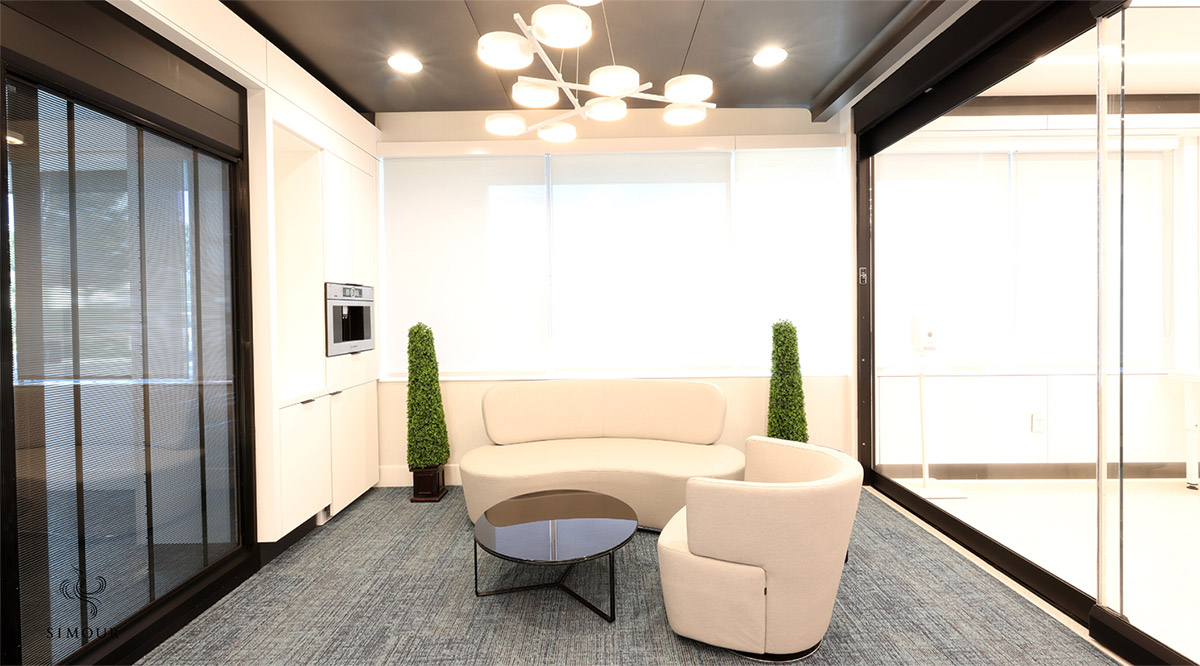The best way to find yourself is to lose yourself in the service of others.” – Mahatma Gandhi
To look at interior design as only a matter of aesthetics seriously undermines the immense value that it can offer to your patients and your practice. See, it is never just about the superficial – an intentional medical interior design can become more meaningful and be an effective tool to achieve success. Aside from aligning with your brand to look cohesive, or to appeal to your audience to gain their trust, interior design has the potential to create environments that inspire healing and promote positive patient outcomes. Whether in nurturing the physical, mental, and emotional well-being; to supporting the recovery process through connectivity and empowerment, the following list is a few ways that you can build a space or practice that truly heals. Let’s start.
1.Let Nature In (Biophilic Design)
Inviting nature into the interiors is one way that you can harness its healing powers in the medical process. There are enough studies that cite its influence in improving patient outcomes and even hastening recovery times. There are many ways that we can introduce the natural world into Medical Interiors. Using natural materials, having more natural lighting through large swathes of glazing not to mention views to the outside reconnect the patient to the broader world. Access to a lawn where patients can stroll or even a courtyard to have some sunshine will be a welcome feature. Even small gestures like placing actual plants inside can already activate a space to be more rejuvenating.
2. Control
A healing environment isn’t just about physical healing, sometimes reinforcing a patient’s well-being can do wonders to their overall wellness. A sense of control over their environment will be greatly appreciated. Having the controls for lighting, air conditioning, windows, and door opening within easy reach and in a manifold that is easily understood empowers the patient to personalize the environment to his satisfaction.
3. Lighting Matters
Lighting brings so many dimensions to a space that the correct lighting strategy is a consequential design decision that will affect a patient’s healing response. As a matter of control, we always suggest using dimmable lamps, especially for patient spaces. This allows them to tune the brightness depending on need or however they want at a specific moment. Glare is a real concern that can be curbed by using the right fixture. An indirect light source like coves or wall sconces can wash surfaces in ambient light that may induce a relaxing atmosphere conducive to recovery. Learn more about brightening the patient experience with lighting here.
4. Effective Wayfinding
Getting lost and confused about where to go is never a pleasant experience. Sometimes planning can already do wonders in making intuitively planned spaces but for everything else, a system of wayfinding signage placed at the right places can aid in the navigation process. Truly effective wayfinding is cohesive, concise, legible, and informative. As a component of a healing environment, it serves everybody to be fully aware of where they are, where they’re supposed to be, and where they are going.
5. Opportunities For Play
As part of recovery and rejuvenation, play often becomes a way to spark joy in the process. Play is fun and partaking in these activities can make the healing process a well-rounded one. Scientifically, play can trigger the release of endorphins also known as the happiness hormone that can instantly improve the well-being of patients. Actively designing spaces that encourage play in the medical setting humanizes the institution leading to an overwhelmingly positive patient experience.
6. Reducing Noise
Soundproofing serves to control noise transference from the source to another space. It’s an issue of comfort, control, and privacy. When a patient is sick, even the slightest disruption can be disconcerting. Mind the soundproofing because these seemingly minor inconveniences can ruin the healing experience. Having the right amount of sound insulation usually does the trick but sometimes an air gap like the ones in double-glazed windows can work better.
Building healing spaces is not just a stroke of luck but an intentional decision you must make to deliver the desired patient outcomes. True healing can only happen when you set the scene for patients to be at their most comfortable and happy and that is where medical interior design can do wonders for your practice. Book a complimentary design consultation with us now and let’s talk about how our collective experience in medical interiors can do the same for you!




